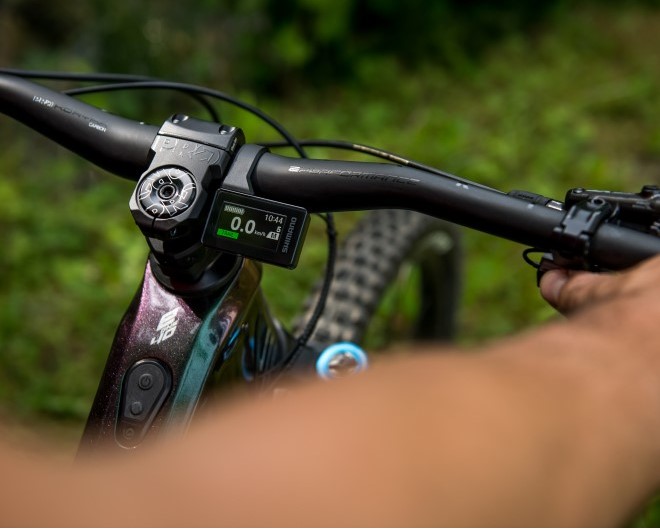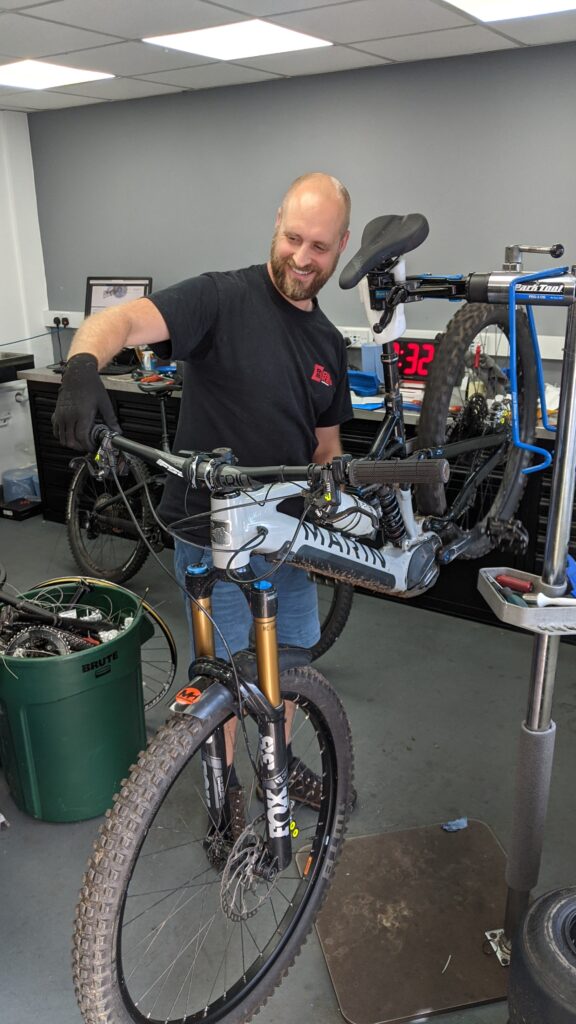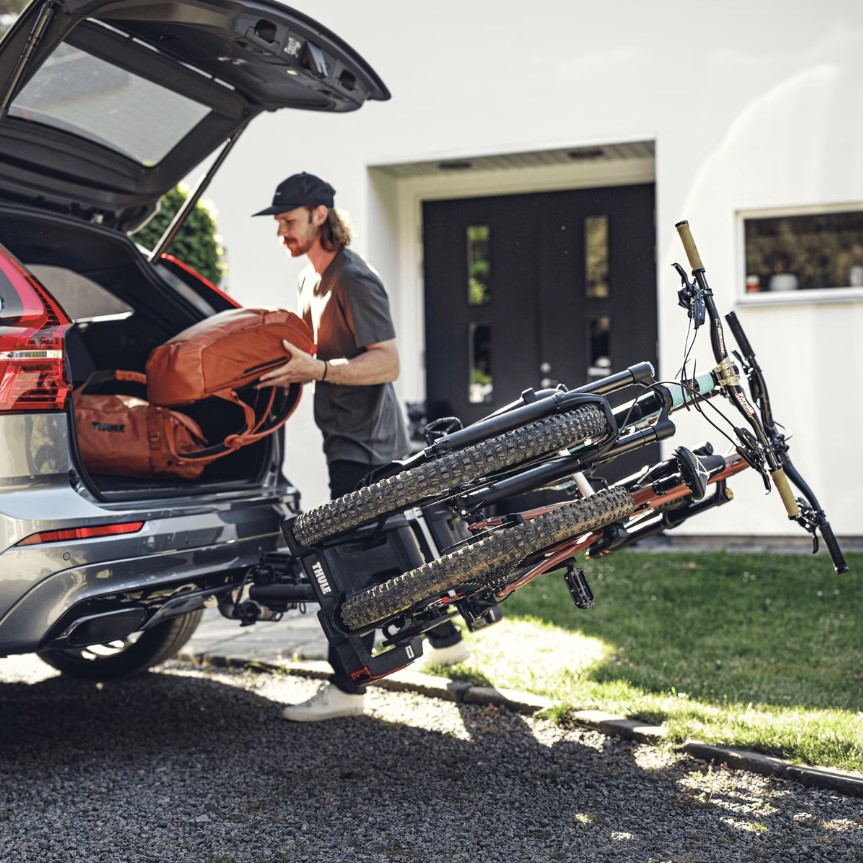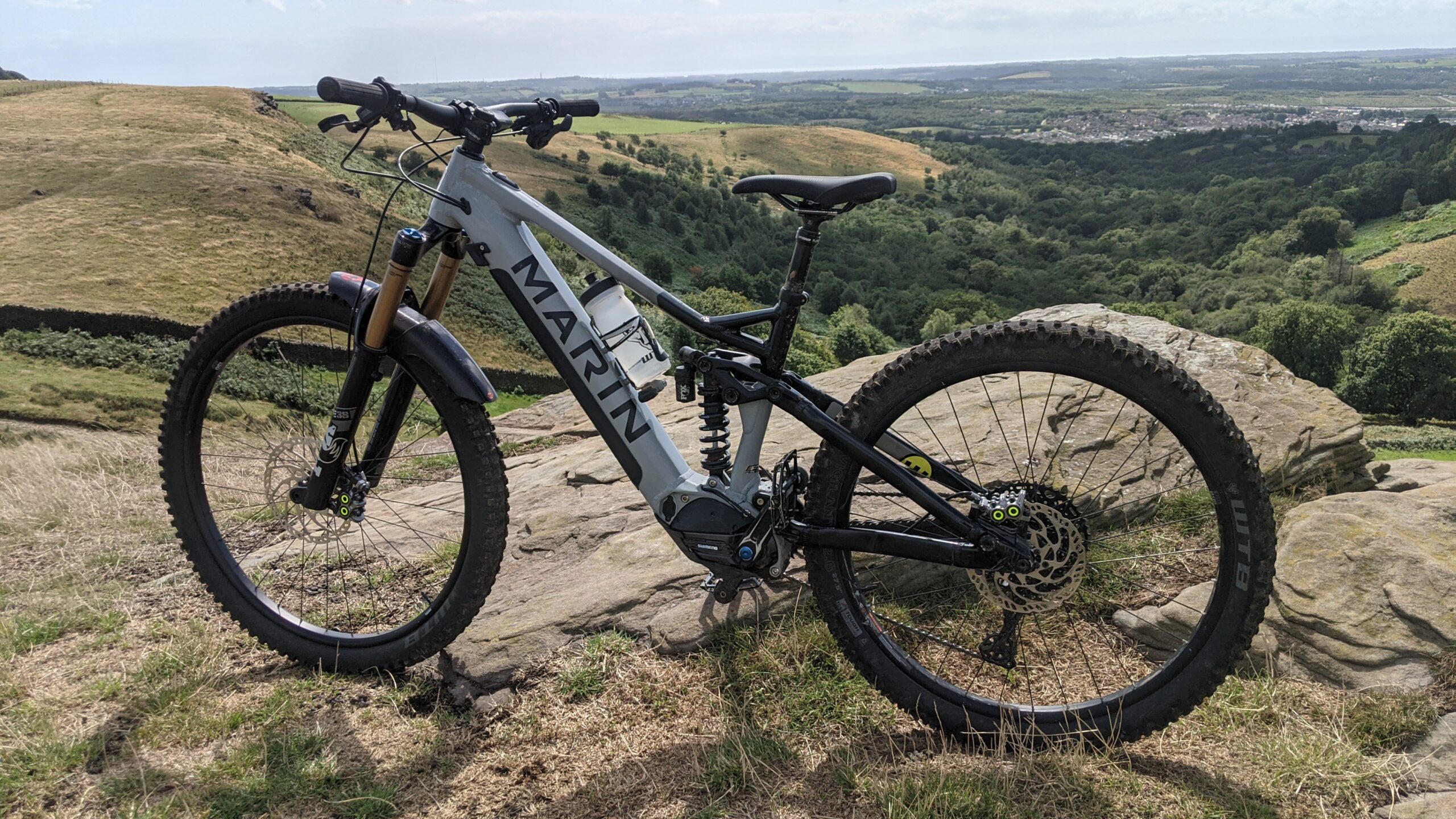First things first, What is an ebike?
An electric bicycle, often referred to as an e-bike or EAPC, is a bicycle outfitted with an electric motor designed to provide assistance while pedalling. This motor draws its energy from a rechargeable battery which is usually neatly integrated into the bike.
For an electric bicycle to qualify as an e-bike, the motor’s role is to aid your pedalling effort as opposed to propelling the bike independently. In other words, pedalling is a necessary component to receive electric assistance. The motor’s output is controlled according to the force of your pedalling and the chosen level of support elected from the E bikes on board control functions.

Does the battery need extra care?
Similar to the battery in your phone, the capacity of an e-bike battery may decline as it ages and can also be influenced by extreme temperatures. Consequently, it’s essential to give your battery some extra attention.
Charge and store your battery indoors where possible
As previously mentioned, batteries can be sensitive to temperature fluctuations. Storing your e-bike battery in a cold shed or garage can adversely impact its charging and overall performance. After your ride, it’s a good practice to remove the battery (if possible) and keep it indoors, away from moisture
Minimise the number of charging cycles
The process of fully discharging a battery and then recharging it to its maximum capacity is termed a ‘cycle.’ The more cycles your battery undergoes, the less effective it becomes over time. To maximise the lifespan of your battery, consider charging it less frequently.
One effective strategy is to recharge it only when it holds less charge than you need for your entire ride, rather than topping it up after each use. Bosch recommend that you leave the battery at 30-60% charge if storing for long periods of time
You can also extend the battery’s longevity by optimising motor usage. Excessing use of turbo mode will put extra load strain on the battery…
Can I fly with my e bike?
Sadly, the answer is no as the airlines will not permit large e bike battery’s within their hold storage. This isn’t to say you can’t fly but with the battery removed. A solution is therefore to hire a battery once you get to your destination. Our partners at Atlas Ride Co, offer this service but make sure that the battery you hire is compatible with your bike before setting off!
Do E bikes require more maintenance?
In short, yes they do! First off, they have more moving parts but more importantly all of those moving parts are under more stress, more of the time. For city and commuting E bikes, the differences in wear won’t be too noticeable however for an electric mountain bike you need to factor in the cost of service and consumable parts.
Increased chain and cassette wear due to additional motor output
Tyres are going to wear quicker due to the additional power and weight
Brakes will take more abuse because of the extra weight
Higher risk of buckling rims due to the weight.
Above all, with an e bike you can ride much further and faster than you would have on your old naturally aspirated bike. More use=more wear. Simples!

Can E bikes be ridden at trail centres?
Yes, although most trail centres will charge you more to enter the trails. You’re effectively getting a free uplift with an e bike and spending more time shredding the trails. The forestry commission place no restrictions for legal E bikes being ridden within their woods and forests.
Can the ebike go on roof rack?
Generally speaking, no. Most E bikes weight exceed the weight limit stipulated by the roof rack manufacturers. Additionally, lifting a wet and slippery E bike above your head is difficult and not advisable. Your best bet is to buy a tow hitch mounted bike rack, like the Thule EasyFold below.

Can Yellow Jersey insure my E bike?
Yes we can-we absolutely love E bikes! So much so that we actually charge less to insure them then a normal bike non pedal assisted E bike. Just remember, we can only insure E bikes which meet the UK EAPC regulations (250w output, 15.5mph motor cut off, pedal assist only)

Can I modify my e bike to make it faster?
No. if you have bought are planning on derestricting your E bike, we cannot and will not insure it. Derestricted E bikes do not fall under the EAPC classification and therefore require an entirely differ approach to insurance. Police forces across the UK are cracking down on derestricted/ illegal E bikes which are being ridden within the public domain. Yellow Jersey also cannot insure bikes fitted with a throttle orbikes which have been retro fitted with a motor.
Are e bike a fire risk?
It is apparent that ‘cheap’ E bikes, (many of which are imported from China) which haven’t been subject to the same level of electrical compliance testing, are the ones that are more at risk of catching fire and therefore should be avoided. Incidentally, many of these types of E bike do not meet the UK EAPC requirements so do not qualify as a Pedal cycle and therefore are not covered by our insurance in the first instance.
Buying a mainstream brand of E bike from a reputable dealer is your best bet to avoid a serious catastrophe.
View this post on Instagram
Are E bikes better than non pedal assist bikes?
This is entirely subjective, however the general consensus is that e bikes offer riders of all levels the ability to climb hills that would have previously been out of bounds, complete more runs, have a more sociable ride when ascending, have increased stability on the downhills and generally have a more enjoyable experience because they’re not completely out of breath.
For reference, I am a fit road rider who loves nothing more than pedalling hard. Having an e bike increased my mountain biking experience exponentially. For mountain biking, I would no longer consider buying a non-electric assist bike (please don’t hate me!)

E bike Jargon buster
EAPC
An acronym for ‘electrically assisted pedal cycle. For further information of the EAPC definition, check out the Gov.uk website
Volts
The voltage of an E-bike is a critical factor influencing its power and performance. Common voltage ratings include 36v, 48v, and 52v, with 48v being the most common option. Higher voltage provides better performance and extended range, albeit at the expense of higher charging costs.
Watts
This is the standard measurement used to define your e bikes power output. You’ll notice that in the United Kingdom, electric motors are permitted for sale with power outputs of up to 250 watts. Any motor exceeding this limit does not fall under the category of an e-bike and is therefore subject to licensing and insurance regulations similar to those governing mopeds.
Watt hours (W/H)
Watt-hours serves as a method to gauge a battery pack’s energy storage capacity, providing valuable insights into the expected performance and range of your new E-bike. To determine the watt-hours (WH) of a battery pack, simply multiply its voltage by the ampere-hours (Ah) rating. For instance, a 36-volt 10-Ah battery pack yields 360 watt-hours (36 X 10 = 360).
A/h
E-bike a/h typically stands for E-bike ampere-hours or amp-hour rating. It’s a measure of the capacity of an electric bike’s battery. The ampere-hour (Ah) rating tells you how much current the battery can deliver over one hour.
If an e-bike has a 15Ah battery, it can provide a current of 15 amperes for one hour. In practical terms, a higher amp-hour rating often indicates a larger battery capacity, which can result in a longer riding range or more power assistance for the electric bike. However, other factors, such as voltage and the bike’s efficiency, also play a role in determining the overall performance and range
Newton-metres (Nm)
Torque is defined as force X length and is measured in Newton-metres (Nm). This implies the force exerted when pushing down on the pedals multiplied by the length of the crank arm. It’s a rotational force, akin to turning a jam jar.
E-bikes typically offer varying maximum torque, typically falling within the range of 40Nm (for instance, the Bosch Active Line) to 85Nm (as seen in the Bosch Performance Line CX). Having a higher torque motor on an e-bike will make a notable difference in performance when setting off from a standstill or climbing steep hills.
Walk Assist
Walk assist is available on some electric bikes and is designed to assist you in moving the bike as you walk. E-bikes are generally quite weighty due to their battery and motor so this handy feature, makes them more manageable if you have to get off and walk.
Has this article changed your view on E bikes? Will your next bike be an E bike or have we all just gone soft? Let us know in the comments! Don’t forget, Yellow Jersey sell electric bike insurance which is designed to cover crash damage, accidental damage, theft, liability cover, personal accident cover and much much more. If you need a bit of help, why not give our customer support team a call on 0333 003 0046. They’re super easy to get through to and will be happy to help !